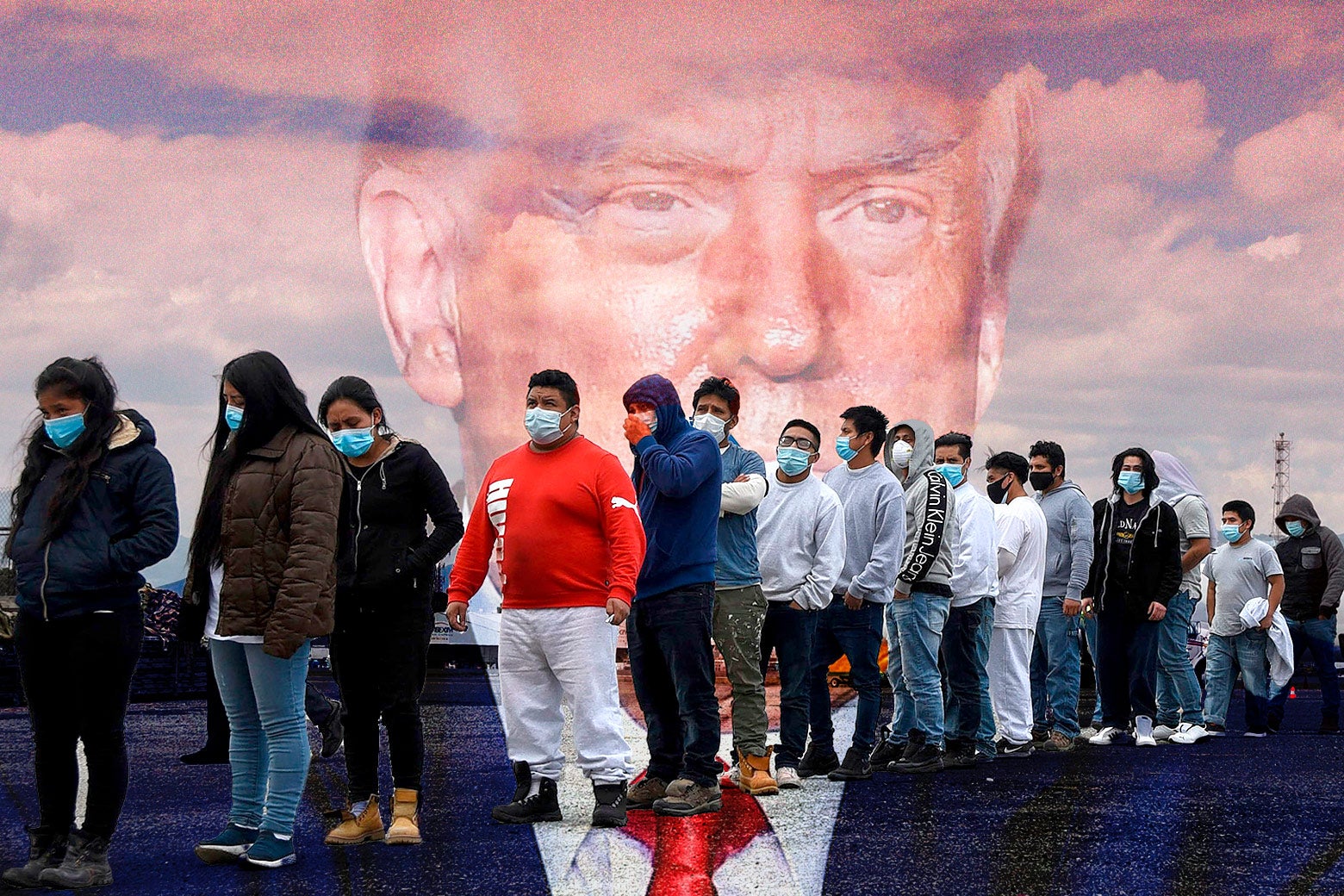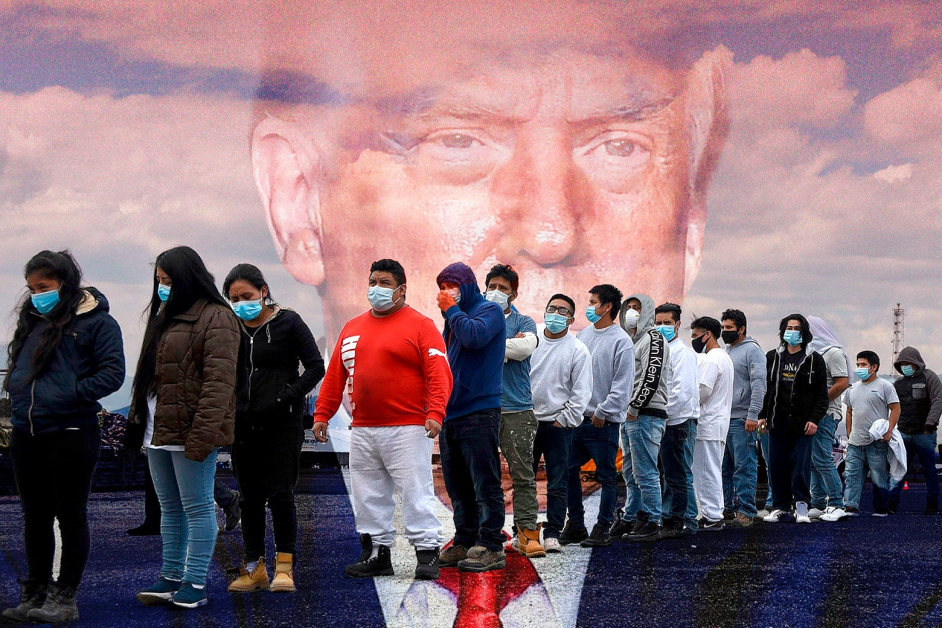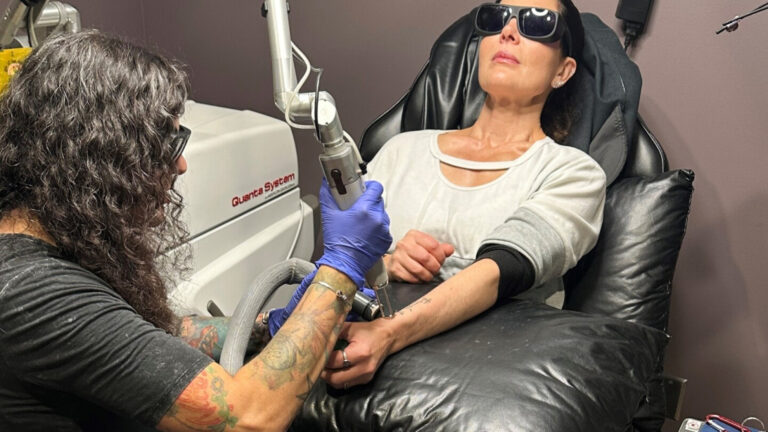
Sign up for the Slatest to get the most insightful analysis, criticism, and advice out there, delivered to your inbox daily.
After the Trump administration rounded up hundreds of Venezuelan migrants around the country—without notice or court hearings—and sent them off to a prison in El Salvador, we’re finally getting details on who was deported and why. And the more we learn, the more obvious it becomes why the government is so eager to expel these individuals without any semblance of due process. It claims that these men are terrorists by virtue of their alleged membership in the Tren de Aragua gang—but evidence of this affiliation is weak to the point of nonexistence.
Consider Jerce Reyes Barrios, one victim of the deportations: a professional soccer player who had fled Venezuela after protesting against dictator Nicolás Maduro and was living peacefully in the U.S. until the government snatched him up and deported him to El Salvador. Linette Tobin, Barrios’ attorney, submitted a declaration in federal court that detailed the disturbing reasons why her client was targeted by Immigration and Customs Enforcement. After entering the U.S. last year, Barrios was scheduled to have an asylum hearing in April. But on Saturday, he was arrested and held at a San Diego detention facility after ICE agents accused him of being a member of Tren de Aragua, the Venezuelan gang that President Donald Trump has been fixated on to fulfill his mass-deportation plan.
ICE’s accusations were based on two things. First, Barrios has a tattoo on his arm of a crown sitting atop a soccer ball that, federal immigration authorities allege, “is proof of gang membership.” In reality, Tobin wrote, the tattoo was inspired by the Real Madrid soccer team, which is also circular in shape and features a crown. Second, Barrios posted a photo of himself on social media in which he’s gesturing with both hands, with his middle fingers down. This, federal agents claimed, was also proof of gang membership—except that Barrios’ hand gesture actually means “I love you” in sign language and is also commonly used as a symbol of rock ’n’ roll.
This implausible misinterpretation of benign tattoos is a common theme across migrants caught up in this unlawful scheme. ICE alleged that another individual, known as E.V., was a member of Tren de Aragua based on his tattoos—which feature “anime, flowers, and animals,” as well as a crown of thorns. Agents reportedly believed that the crown indicates gang membership. But as his lawyer explained, it is in fact “a tribute to his grandmother,” whose “date of death appears at the base of the crown.”
Others faced similarly baseless accusations. One migrant, known as J.A.B.V., has tattoos of “a Rose, a Clock and a Crown with his son’s name on it,” none of which indicates gang membership. Like many of these men, he has never been arrested, charged, or convicted of a crime in Venezuela or the United States. But ICE agents said that tattoos were proof of Tren de Aragua membership and deported him. Another migrant, L.G., “has three tattoos: one is a rosary, the other is his partner’s name, and the third is a rose and a clock.” None have any connection to a gang, but ICE accused him of gang membership anyway. It made the same claim about Anyelo Jose Sarabia because he has tattoos of a Bible verse and a rose with money as petals. And about Franco Caraballo because of a tattoo celebrating his daughter. The list goes on.
Adding insult to injury, many of these migrants came to the U.S. seeking refuge from Tren de Aragua, only to then be accused of membership in that very gang. One person, whose name was redacted, had applied for asylum six months before being unlawfully deported this month “due to my fear of harm and mistreatment from multiple criminal groups, including the Tren de Aragua gang,” according to his attorney’s declaration. Immigration agents detained him while he was living in a New York homeless shelter with his family.
The government’s theory appears to be that any Venezuelan migrant with tattoos is presumptively a member of Tren de Aragua until proven otherwise—except that they cannot prove otherwise, since they have been denied due process. Trump invoked the Alien Enemies Act of 1798 precisely because, he claims, it allows him to expel noncitizens without the annoyance of judicial oversight. That is wrong, but the Justice Department is hoping to get around that problem by moving so quickly that courts can’t keep up. And when courts have tried to intervene, the DOJ claims that Trump’s decisions are unreviewable, rejecting the judiciary’s authority to limit the president’s lawbreaking.
These false accusations are not novel: During Trump’s first term, ICE routinely accused noncitizens of gang membership based on their tattoos and tried to deport them on that basis. One federal judge even accused ICE agents of lying under oath about the tattoos of a man with DACA status, freeing him from illegal detention. From that incident, the new administration seems to have learned an important lesson: When granted due process in a court of law, noncitizens might actually be able to disprove the bogus allegations against them. And in response, the government has developed new legal theories designed to prevent judges from seeing, let alone ruling upon, the evidence that ICE has concocted to justify their deportation.
It’s an open question whether ICE targeted these men because of their tattoos or whether agents detained them first, then fabricated a pretext later. Those details will hopefully be sorted out when lawyers for the victims can interrogate those who perpetrated this scheme. What matters most now is that judges have an opportunity to review the alleged evidence, in conjunction with the relevant law, and end this persecution before its test run is expanded into a full-blown suspension of all immigrants’ constitutional rights.
Get the best of news and politics
Sign up for Slate’s evening newsletter.



